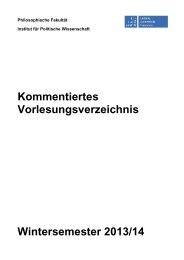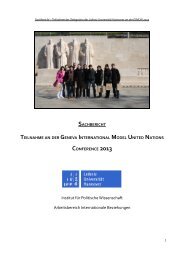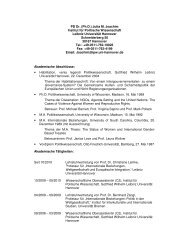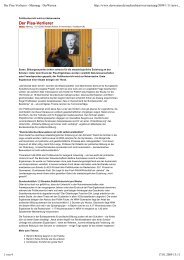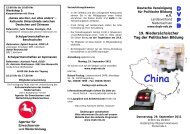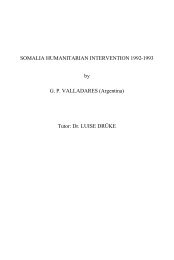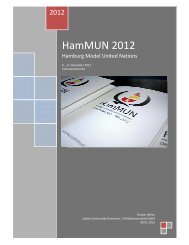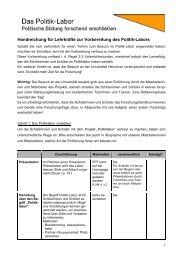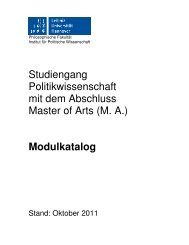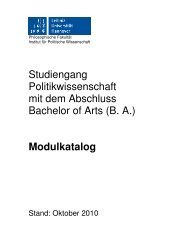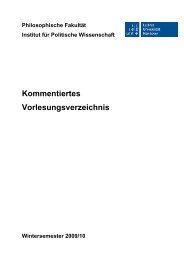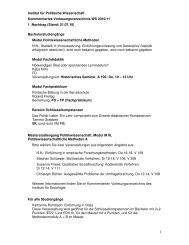Preventive Action for Refugee Producing Situations
Preventive Action for Refugee Producing Situations
Preventive Action for Refugee Producing Situations
You also want an ePaper? Increase the reach of your titles
YUMPU automatically turns print PDFs into web optimized ePapers that Google loves.
78 Chapter 3<br />
3.1.2.1. The OOP (Orderly Departure Program), the 1979 and the 1989<br />
Meeting and the CPA<br />
Introduction<br />
The major cause of the exodus from Vietnam was the fall of Saigon in<br />
April 1975, which, following a strong, two- decade-long American involvement,<br />
resulted in the restructuring of the economic and political<br />
system in South Vietnam.<br />
This analysis cannot provide a complete account of the causes that<br />
motivated nearly one and a half million persons 150 to leave their homeland,<br />
often under life-threatening circumstances en route to asylum. It focuses<br />
rather on those factors that have perpetuated the outflow of refugees<br />
over the past thirteen years, even though they could to some extent have<br />
been addressed. I will also examine the long-term impact of the Orderly<br />
Departure Program (ODP) and the 1979 Geneva Meeting on <strong>Refugee</strong>s<br />
and Displaced Persons in Southeast Asia, on July 20 and 21, and explore<br />
the question of whether new policies and actions would be more effective<br />
in view of the developments of the past decade.<br />
Background<br />
The Orderly Departure program was originally intended by UNHCR only<br />
to facilitate family reunification. Following strenuous negotiations with<br />
the Vietnamese authorities, UNHCR agreed to expand the program to<br />
include "other humanitarian cases." 151 Although the ODP was not<br />
intended to remedy the causes of the exodus from Vietnam, and has not<br />
done so, UNHCR stepped beyond its usual functions of offering protec<br />
_______________________<br />
150 Between May 1975 and May 1987, 1,486,136 Indochinese <strong>Refugee</strong>s<br />
(including Khmer and Laotians) departed from the camps in Southeast Asia:<br />
792,871 to the USA and 693,265 to other resettlement countries (excluding<br />
the Orderly Departure Program). See US Congress, Senate Committee on<br />
the Judiciary, Midyear Consultation on <strong>Refugee</strong> Programs: Hearing Be<strong>for</strong>e<br />
the Subcommittee on Immigration and <strong>Refugee</strong> Affairs, 100th Congress, 1st<br />
sess. June 30, 1987, (Washington, D.C.: U.S. Govt. Printing Office), 1987,<br />
p. 109.<br />
151 See Milton Osbome, "The Indochinese <strong>Refugee</strong>s: Cause and Effects,"<br />
International Affairs, 56 (1980), pp. 39-40.<br />
Analytical Discussion 79<br />
tion and assistance to refugees onto the new terrain of initiating the prevention<br />
of refugee flows.i 52<br />
The official start of the ODP took place at a consultative meeting in<br />
December 1978, at which the government of Hanoi agreed, with some<br />
exceptions, to grant exit visas to all Vietnamese who wished to leave. 153 On<br />
the basis of the personal initiative of the then Deputy High Commissioner,<br />
Dale De Haan, to keep negotiating this issue persistently with the<br />
government in Hanoi, the Vietnamese authorities and UNHCR reached an<br />
understanding to operate the ODP. The official record of the agreement<br />
says:<br />
In furtherance of a conclusion of the Consultative Meeting held in December<br />
1978, UNHCR signed a Memorandum of Understanding with the Government of<br />
Vietnam on 30 May 1979, concerning the orderly departure of family reunion and<br />
other humanitarian cases from that country. It is hoped that an early<br />
implementation of this programme will ease the situation in some measure. 154<br />
The ODP established a new precedent <strong>for</strong> UNHCR in its approach to the<br />
management of refugee problems by engaging the Office in a long-range<br />
activity to stem an outflow of refugees. The program is also a rare example<br />
of international cooperation in which preventive action worked, because of<br />
the converging interests of the three major parties involved. 155 The country<br />
of origin rid itself of elements who did not want to stay and in whom it was<br />
not interested; the first-asylum countries could control their influx; and the<br />
resettlement countries were able to choose their candidates in the country<br />
of origin rather than in a camp.<br />
One of the OOP's most important features is that it established a legal<br />
channel <strong>for</strong> initiating a change in Vietnam's policy prohibiting the right<br />
_______________________<br />
152 Barry Wain, "The Indochina <strong>Refugee</strong> Crisis," Foreign Affairs, 58 (Fall<br />
1979), p. 161, as quoted in Kumin, p. 7.<br />
153 Statement of the Ministry of Foreign Affairs, Government of the Socialist<br />
Republic of Vietnam, quoted in Kumin, Annex III. 12 January 1979, p. 254.<br />
154 Background note dated 9 July 1979, prepared by the United Nations High<br />
Commissioner <strong>for</strong> <strong>Refugee</strong>s <strong>for</strong> the Meeting on <strong>Refugee</strong> and Displaced<br />
Persons in Southeast Asia, p. 5, in (UN Doc. A/34/ 627), 7 November 1979.<br />
United Nations. Secretary-General. Report of the Secretary-General on the<br />
Meeting on <strong>Refugee</strong>s and Displaced Persons in South East Asia. Geneva, 20<br />
and 21 July 1979, and subsequent developments, Annex I, p. 5.<br />
155 In the Report on the work of the organization, the Secretary-General pointed<br />
out that the peaceful resolution of problems depends more than anything on a<br />
convergence of interests and that such convergence now exists on important<br />
issues confronting the world, p. 18. A/42/1,9 September 1987.



